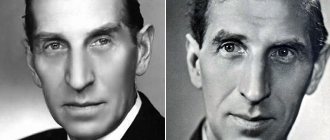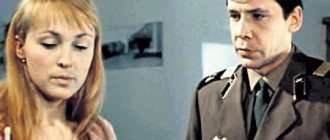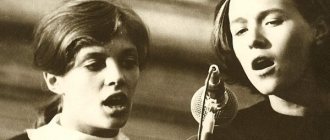The writer's childhood
Lev Nikolaevich was a representative of a large noble family, the fourth child in it. His mother, Princess Volkonskaya, died early. At this time, Tolstoy was not yet two years old, but he formed an idea of his parent from the stories of various family members. In the novel "War and Peace" the image of the mother is represented by Princess Marya Nikolaevna Bolkonskaya.
The biography of Leo Tolstoy in his early years is marked by another death. Because of her, the boy became an orphan. Leo Tolstoy's father, a participant in the War of 1812, like his mother, died early. This happened in 1837. At that time the boy was only nine years old. Leo Tolstoy's brothers, he and his sister, were entrusted to the upbringing of T. A. Ergolskaya, a distant relative who had enormous influence on the future writer. Childhood memories have always been the happiest for Lev Nikolaevich: family legends and impressions of life in the estate became rich material for his works, reflected, in particular, in the autobiographical story “Childhood”.
Who was Leo Tolstoy?
On September 9, 1828, Leo Tolstoy was born in the Tula province, Russia. In the 1860s he wrote his first great novel, War and Peace. In 1873, Tolstoy began work on the second of his most famous novels, Anna Karenina. He continued to write fiction throughout the 1880s and 1890s. One of his most successful later works was “The Death of Ivan Ilyich.” Tolstoy died on November 20, 1910 in Astapovo, Russia.
Leo Tolstoy, Rusland-Portrait, als Offizier - 1854 (Photo: ullstein bild / Getty Images)
Study at Kazan University
The biography of Leo Tolstoy in his youth was marked by such an important event as studying at the university. When the future writer turned thirteen years old, his family moved to Kazan, to the house of the children’s guardian, a relative of Lev Nikolaevich P.I. Yushkova. In 1844, the future writer was enrolled in the Faculty of Philosophy at Kazan University, after which he transferred to the Faculty of Law, where he studied for about two years: study did not arouse keen interest in the young man, so he devoted himself passionately to various social entertainments. Having submitted his resignation in the spring of 1847, due to poor health and “domestic circumstances,” Lev Nikolaevich left for Yasnaya Polyana with the intention of studying a full course of legal sciences and passing an external exam, as well as learning languages, “practical medicine,” history, and rural studies. economics, geographical statistics, study painting, music and write a dissertation.
Origin and formation
The future classic came from a noble family known since the 14th century. Peter Andreevich Tolstoy, the writer’s paternal ancestor, earned the favor of Peter I by investigating the case of his son, who was suspected of treason. Then Pert Andreevich headed the Secret Chancellery, and his career took off. Nikolai Ilyich, the father of the classic, received a good education. However, it was combined with unshakable principles that did not allow him to advance at court.
The fortune of the father of the future classic was upset due to the debts of his parent, and he married the middle-aged but wealthy Maria Nikolaevna Volkonskaya. Despite the initial calculation, they were happy in marriage and had five children.
Childhood
Lev Nikolaevich was born fourth (there was also the youngest Maria and the elders Nikolai, Sergei and Dmitry), but after his birth he received little attention: his mother died two years after the birth of the writer; the father moved with the children to Moscow for a short time, but soon died too. The impressions from the trip were so strong that young Leva created his first essay, “The Kremlin.”
The children were raised by several guardians at once: first T.A. Ergolskaya and A. M. Osten-Sacken. A. M. Osten-Sacken died in 1840, and the children went to Kazan to live with P. I. Yushkova.
Boyhood
Yushkova’s house was secular and cheerful: receptions, evenings, external splendor, high society - all this was very important for the family. Tolstoy himself sought to shine in society, to be “comme il faut,” but shyness did not allow him to unfold. Real entertainment for Lev Nikolayevich was replaced by reflection and introspection.
The future classicist studied at home: first under the guidance of the German tutor Saint-Thomas, and then with the Frenchman Reselman. Following the example of the brothers, Lev decides to enter the Imperial Kazan University, where Kovalevsky and Lobachevsky worked. In 1844, Tolstoy began studying at the Faculty of Oriental Studies (the admissions committee was amazed by his knowledge of the “Turkish-Tatar language”), and later transferred to the Faculty of Law.
Youth
The young man had a conflict with his home history teacher, so the grades in the subject were unsatisfactory, and he had to take the course again at the university. In order to avoid repeating what had happened, Lev switched to law school, but did not finish, left the university and went to Yasnaya Polyana, his parents’ estate. Here he is trying to run a household using new technologies, he tried, but was unsuccessful. In 1849, the writer went to Moscow.
During this period, keeping a diary begins; entries will continue until the death of the writer. They are the most important document; in Lev Nikolaevich’s diaries he describes the events of his life, and engages in introspection, and reasons. It also described the goals and rules that he tried to follow.
Years of youth
In the fall of 1847, Tolstoy left for Moscow and then to St. Petersburg in order to pass candidate exams at the university. During this period, his lifestyle often changed: he either studied various subjects all day long, then devoted himself to music, but wanted to start a career as an official, or dreamed of joining a regiment as a cadet. Religious sentiments that reached the point of asceticism alternated with cards, carousing, and trips to the gypsies. The biography of Leo Tolstoy in his youth is colored by the struggle with himself and introspection, reflected in the diary that the writer kept throughout his life. During the same period, interest in literature arose, and the first artistic sketches appeared.
Participation in the war
In 1851, Nikolai, Lev Nikolayevich’s older brother, an officer, persuaded Tolstoy to go to the Caucasus with him. Lev Nikolaevich lived for almost three years on the banks of the Terek, in a Cossack village, traveling to Vladikavkaz, Tiflis, Kizlyar, participating in hostilities (as a volunteer, and then was recruited). The patriarchal simplicity of the life of the Cossacks and the Caucasian nature struck the writer with their contrast with the painful reflection of representatives of educated society and the life of the noble circle, and provided extensive material for the story “Cossacks,” written in the period from 1852 to 1863 on autobiographical material. The stories “Raid” (1853) and “Cutting Wood” (1855) also reflected his Caucasian impressions. They also left a mark in his story “Hadji Murat,” written between 1896 and 1904, published in 1912.
Returning to his homeland, Lev Nikolaevich wrote in his diary that he really fell in love with this wild land, in which “war and freedom,” things so opposite in their essence, are combined. Tolstoy began to create his story “Childhood” in the Caucasus and anonymously sent it to the Sovremennik magazine. This work appeared on its pages in 1852 under the initials L.N. and, along with the later “Adolescence” (1852-1854) and “Youth” (1855-1857), formed the famous autobiographical trilogy. His creative debut immediately brought real recognition to Tolstoy.
Biography of Lev Nikolaevich Tolstoy: briefly, most importantly
Lev Nikolaevich Tolstoy was born on September 9, 1828 in Yasnaya Polyana, the Tolstoy family estate near Tula and Moscow. He was the fourth of five children of Count Nikolai Ilyich Tolstoy, a veteran of the Patriotic War of 1812, and Countess Maria Tolstoy (Volkonskaya). His mother died when Lev was two years old. At the age of nine, he also lost his father. Together with the other children, he was raised by relatives. In 1844, he began studying law and oriental languages at Kazan University. Teachers described him as an unwilling and unable student.
Tolstoy dropped out of the university in the middle of his studies, returned to Yasnaya Polyana and began to spend all his time in Tula, Moscow and St. Petersburg, leading a rather unbridled lifestyle. At this time, he begins to write: the first work “Childhood” comes out from his pen, reflecting his own youth. The story was published in 1852. Earlier, in 1851, escaping from debt, Count Tolstoy and his brother joined the Russian army and went to the Caucasus. He takes part in the Crimean War and finds himself in Sevastopol during its long siege in 1854-1855. The young officer Lev Tolstoy was promoted to lieutenant for his courage. After the end of the Crimean War, he leaves the army. This experience, coupled with witnessing a public execution in Paris in 1857, makes him an opponent of violence.
A trip to Europe in 1860-1861 influenced the creative development of Lev Nikolaevich. During the trip, he meets Victor Hugo and reads the recently completed novel Les Misérables. Hugo's influence can be found in the depiction of warfare in War and Peace. He was also influenced by his acquaintance with the French anarchist Pierre-Joseph Proudhon. Tolstoy used the title of the famous anarchist's publication in his main work - this is how it received the name "War and Peace." Returning to Yasnaya Polyana, Count Tolstoy founded 13 schools for the children of peasants who had just received their freedom. Despite the short life of Tolstoy's educational projects, his schools can be called the first example of democratic education.
In 1862, Leo Tolstoy married Sofya Andreevna Bers, who was 16 years younger. They had 13 children, five of whom died in childhood. On the eve of the wedding, Lev Nikolaevich gave his future wife his diaries, which described in detail his sexual past. Sophia was also aware that her husband had a son from a maid, who later served as a coachman for the children of the Tolstoy couple. However, it was the support of Sofia Andreevna that allowed Lev Nikolaevich to create “War and Peace” and “Anna Karenina”. In his writing activities, his wife acted as secretary, editor and financial manager. Sonya manually wrote down and rewrote her husband's work, putting it in order before sending it to the publisher. Despite this, their marriage cannot be called happy. The writer's views became more and more radical, which affected their relationship.
Lev Nikolaevich Tolstoy died in 1910, at the age of 82. Feeling the proximity of death, the writer left home on a winter night. This departure became an act of protest against the rich and peaceful life on the estate. He died of pneumonia at the Astapovo railway station in the Ryazan province after one day of travel. The stationmaster took Lev Nikolaevich to his home, waiting for the doctor to arrive.
Many people tried to say goodbye to the writer, but the authorities restricted access to the funeral procession. Nevertheless, his death affected a huge part of the population: spontaneous meetings took place, work in institutions stopped. Despite all the prohibitions, there was a reaction to the death of the great writer both in Russia and throughout the world.
How useful is the publication?
Click on a star to rate!
Average rating 0 / 5. Number of ratings: 0
No ratings yet. Be the first to rate.
Crimean campaign
In 1854, the writer went to Bucharest, to the Danube Army, where the work and biography of Leo Tolstoy were further developed. However, soon a boring staff life forced him to transfer to besieged Sevastopol, to the Crimean Army, where he was a battery commander, showing courage (awarded with medals and the Order of St. Anne). During this period, Lev Nikolaevich was captured by new literary plans and impressions. He began writing “Sevastopol stories,” which were a great success. Some ideas that arose even at that time allow one to discern in the artillery officer Tolstoy the preacher of later years: he dreamed of a new “religion of Christ,” purified of mystery and faith, a “practical religion.”
In St. Petersburg and abroad
Lev Nikolaevich Tolstoy arrived in St. Petersburg in November 1855 and immediately became a member of the Sovremennik circle (which included N. A. Nekrasov, A. N. Ostrovsky, I. S. Turgenev, I. A. Goncharov and others). He took part in the creation of the Literary Fund at that time, and at the same time became involved in conflicts and disputes among writers, but he felt like a stranger in this environment, which he conveyed in “Confession” (1879-1882). Having retired, in the fall of 1856 the writer left for Yasnaya Polyana, and then, at the beginning of the next year, 1857, he went abroad, visiting Italy, France, Switzerland (impressions from visiting this country are described in the story “Lucerne”), and also visited Germany. In the same year in the fall, Lev Nikolaevich Tolstoy returned first to Moscow and then to Yasnaya Polyana.
Lev Nikolaevich Tolstoy (1828-1910). Biography in dates and facts
Lev Nikolaevich Tolstoy is a Russian writer, publicist, teacher, creator of the original philosophical doctrine, called “Tolstoyism” and which caused a wide socio-cultural movement both in Russia itself and beyond its borders. Tolstoy's work, permeated with the pathos of affirming the moral foundations of life and spiritual self-improvement of the individual, marked a new stage in the development of realism.
Life of L. Tolstoy in dates and facts
September 9, 1828 - born on the Yasnaya Polyana estate in the Tula province into a family of well-born aristocrats. Two years after his birth, his mother died.
1837 - the Tolstoy family moved to Moscow, where the father died that same year. From that time on, guardians were involved in raising the future writer.
1844 - having chosen a diplomatic career, Tolstoy entered Kazan University in the department of Arabic-Turkish literature of the Oriental Faculty, but soon transferred to the Faculty of Law, and then left the university and returned to Yasnaya Polyana.
1849 - successfully passed two exams for a candidate's degree at St. Petersburg University, but abandoned plans to further continue his education.
1852 - his first publication appeared in the authoritative magazine Sovremennik - the story “Childhood”, which opened an autobiographical trilogy that included two more parts: “Adolescence” and “Youth” (1852–1857).
1852 - 1856 — while in military service, he visited the Caucasus and Crimea, took part in the Crimean War, in particular, in the heroic defense of Sevastopol. For military services he was awarded the Order of St. Anne and two medals. Impressions from his stay in the Caucasus and Crimea were reflected artistically in the unfinished story “Cossacks” (1863) and the cycle “Sevastopol Stories” (1855–1856).
1855 - L.N. Tolstoy came to St. Petersburg, where he met the leading writers of that time: I.S. Turgenev, N.A. Nekrasov, A.A. Fetom, M.E. Saltykov-Shchedrin, A.N. Ostrovsky and others. Communication with them contributed to his awareness of his own calling as a writer.
1856 - made his first trip abroad, during which he visited France, Switzerland, and Germany. The writer summarized his critical observations of Western European life in artistic form in the story “Lucerne” (1857).
1859 - opened a school for peasant children in Yasnaya Polyana, where he himself gave lessons.
1860 - 1861 — made a second trip to European countries (Germany, Switzerland, France, England, Belgium). At this time, the writer began writing the novel “The Decembrists,” which later developed into the epic novel “ War and Peace,” work on which continued until 1869.
1862 - married Sophia Bers.
1872 - 1875 - Actively engaged in teaching activities, Tolstoy compiled and published a series of relevant publications, which included “ABC”, “New ABC” and “Russian Books for Reading”.
1873 - 1877 — the writer worked on the novel “Anna Karenina”.
1881 - addressed Tsar Alexander III with a request to cancel the execution of terrorists who killed Tsar Alexander II.
1880s - a number of Tolstoy’s “rebellious” works of different genres appeared: the treatise “What is my faith?” (1884), which shook up church circles, the drama “The Power of Darkness” (1887), which was banned from production on stage, the story “The Kreutzer Sonata” (1889), persecuted by censorship and only with the permission of the tsar published in the collected works of the writer. Material from the site //iEssay.ru
1891 - Tolstoy renounced copyright on works written after 1881, which caused serious conflict in his family.
1895 - published the article “Shame,” in which he condemned corporal punishment of peasants.
1899 - completed the novel “Sunday”, to which he devoted ten years of his work.
1901 - addressed Tsar Nicholas II with a letter in which he called for the abolition of private ownership of land.
1908 - L. Tolstoy’s article “I Can’t Be Silent!” was published abroad, in which he decisively opposed the death penalty.
1910 - the writer tried to carry out his long-planned escape from Yasnaya Polyana and, alone and secretly from his loved ones, left his home and went south. However, on the way he caught a cold and fell ill.
November 20, 1910 - died due to pneumonia.
Didn't find what you were looking for? Use search ↑↑↑
On this page there is material on the following topics:
- biography of Tolstoy in dates
- writer a.n. Tolstoy in Maryino
- biography of Leo Tolstoy summary
- Lev Nikolaevich Tolstoy summary by dates
- biography of ln tolstoy by dates
Opening of a public school
In 1859, Tolstoy opened a school for peasant children in the village, and also helped establish more than twenty similar educational institutions in the Krasnaya Polyana area. In order to get acquainted with the European experience in this area and apply it in practice, the writer Leo Tolstoy again went abroad, visited London (where he met with A.I. Herzen), Germany, Switzerland, France, and Belgium. However, European schools somewhat disappoint him, and he decides to create his own pedagogical system based on personal freedom, publishes textbooks and works on pedagogy, and applies them in practice.
"War and Peace"
Lev Nikolaevich in September 1862 married Sofya Andreevna Bers, the 18-year-old daughter of a doctor, and immediately after the wedding he left Moscow for Yasnaya Polyana, where he devoted himself entirely to household concerns and family life. However, already in 1863, he was again captured by a literary idea, this time creating a novel about the war, which was supposed to reflect Russian history. Leo Tolstoy was interested in the period of our country's struggle with Napoleon at the beginning of the 19th century.
In 1865, the first part of the work “War and Peace” was published in the Russian Bulletin. The novel immediately evoked many responses. Subsequent parts provoked heated debate, in particular, the fatalistic philosophy of history developed by Tolstoy.
Books
'War and Peace'
Lives in Yasnaya Polyana with his wife and children Tolstoy spent most of the 1860s working on his first great novel, War and Peace. Part of the novel was first published in Russky Vestnik in 1865, under the title “The Year 1805.” By 1868 he had published three more chapters. A year later the novel was finished. Both critics and audiences were buzzing about the novel's historical narratives of the Napoleonic Wars, coupled with the thoughtful development of realistic but fictional characters. The novel also uniquely included three long essays satirizing the laws of history. Among the ideas that Tolstoy extols in War and Peace is the belief that the quality and meaning of a person's life mainly stems from his daily activities.
READ MORE: Writing the World: Leo Tolstoy and War and Peace; (Photo: Hulton Archive/Getty Images)
'Anna Karenina'
After the success of War and Peace, in 1873 Tolstoy began work on the second of his most famous novels, Anna Karenina. Similar to War and Peace, Anna Karenina fictionalized some biographical events from Tolstoy's life, which was especially evident in the romance of the characters Kitty and Levin, whose relationship is said to resemble Tolstoy's courtship with his own wife.
Anna Karenina's first sentence is one of the most famous lines of the book: “All happy families are alike, every unhappy family is unhappy in its own way.” Anna Karenina was published in installments from 1873 to 1877 to critical and public acclaim. The royalties that Tolstoy earned from the novel contributed to his rapidly growing wealth.
"Anna Karenina"
This work was created in the period from 1873 to 1877. Living in Yasnaya Polyana, continuing to teach peasant children and publish his pedagogical views, Lev Nikolaevich in the 70s worked on a work about the life of contemporary high society, building his novel on the contrast of two storylines: the family drama of Anna Karenina and the domestic idyll of Konstantin Levin , close both in psychological pattern, and in beliefs, and in the way of life of the writer himself.
Tolstoy strove for an externally non-judgmental tone of his work, thereby paving the way for a new style of the 80s, in particular, folk stories. The truth of peasant life and the meaning of existence of representatives of the “educated class” - these are the range of questions that interested the writer. “Family thought” (according to Tolstoy, the main one in the novel) is translated into a social channel in his work, and Levin’s self-exposures, numerous and merciless, his thoughts about suicide are an illustration of the author’s spiritual crisis experienced in the 1880s, which had matured even while working on this novel.
Tolstoy's journalism
Tolstoy’s journalism reflects his spiritual drama: depicting pictures of the idleness of the intelligentsia and social inequality, Lev Nikolayevich posed questions of faith and life to society and himself, criticized the institutions of the state, going so far as to deny art, science, marriage, court, and the achievements of civilization.
The new worldview is presented in “Confession” (1884), in the articles “So what should we do?”, “On hunger”, “What is art?”, “I cannot remain silent” and others. The ethical ideas of Christianity are understood in these works as the foundation of the brotherhood of man.
As part of a new worldview and a humanistic understanding of the teachings of Christ, Lev Nikolaevich spoke out, in particular, against the dogma of the church and criticized its rapprochement with the state, which led to him being officially excommunicated from the church in 1901. This caused a huge resonance.
Novel "Sunday"
Tolstoy wrote his last novel between 1889 and 1899. It embodies the entire range of problems that worried the writer during the years of his spiritual turning point. Dmitry Nekhlyudov, the main character, is a person internally close to Tolstoy, who goes through the path of moral purification in the work, ultimately leading him to comprehend the need for active good. The novel is built on a system of evaluative oppositions that reveal the unreasonable structure of society (the deceit of the social world and the beauty of nature, the falsehood of the educated population and the truth of the peasant world).
last years of life
The life of Lev Nikolayevich Tolstoy in recent years was not easy. The spiritual turning point turned into a break with one’s environment and family discord. The refusal to own private property, for example, caused discontent among the writer’s family members, especially his wife. The personal drama experienced by Lev Nikolaevich was reflected in his diary entries.
In the fall of 1910, at night, secretly from everyone, 82-year-old Leo Tolstoy, whose life dates were presented in this article, accompanied only by his attending physician D.P. Makovitsky, left the estate. The journey turned out to be too much for him: on the way, the writer fell ill and was forced to disembark at the Astapovo railway station. Lev Nikolaevich spent the last week of his life in a house that belonged to her boss. The whole country was following reports about his health at that time. Tolstoy was buried in Yasnaya Polyana; his death caused a huge public outcry.
Many contemporaries came to say goodbye to this great Russian writer.
Sofya Andreevna
Let's say a few words separately about Leo Tolstoy's granddaughter Sonyushka (as she was affectionately called). She was the full namesake of the writer’s wife and her grandmother, who doted on the girl and even became her godmother. When the girl was 4 years old, she and her mother moved to England. From that time on, she no longer met her grandparents, but often wrote them letters and sent them sweet postcards. Her mother was involved in her upbringing, since her father (Andrei Tolstoy) left the family. In 1908, the Family returned to Russia. Sonya's mother bought an apartment in Moscow, where the descendants of Leo Tolstoy still live.
Sophia grew up smart, received a good education, and knew several languages. She left her mark on history by becoming the wife and greatest love of Sergei Yesenin. He dedicated his immortal works to her. Sofya Andreevna wore a copper ring on her finger all her life, given to her by Yesenin. Now it is an exhibit in Yasnaya Polyana.
S. A. Tolstaya-Yesenina since 1928. She worked a lot in the museum of Lev Nikolaevich Tolstoy. In 1941–1957 – was the director of the museum. She did a great job of restoring Yasnaya Polyana after the Nazi occupation.











